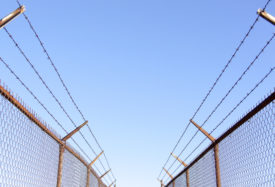 This series is about flawed institutions of governance. Notice the word “governance”—not “government.” It’s not about inadequate or wrong-headed laws and policies. Nor is it about heroic, passable, or ineffectual leadership. Such things are the normal stuff of public debate, and we write scores of posts each year about them here at the Daily Score.
This series is about flawed institutions of governance. Notice the word “governance”—not “government.” It’s not about inadequate or wrong-headed laws and policies. Nor is it about heroic, passable, or ineffectual leadership. Such things are the normal stuff of public debate, and we write scores of posts each year about them here at the Daily Score.
Instead, I want to talk about design flaws in the way public policies are made: constitutional provisions, legislative processes, electoral rules. I want to explore the rules of the game; the lawmaking procedures. It may sound tedious and arcane, but it’s a vitally important subject. It might be the most important subject of all.
Last time, I gave an example of why changing the rules can make all the difference: Washington state’s recent constitutional amendment in favor of majority rule for school levies will yield tens of billions of dollars of investments in Washington state’s public education system over the decades ahead.
And then I mentioned the US Senate—an institution with incalculable influence over the future of the Northwest, and that is also, as I argue below, the single most undemocratic institution of government among all the industrial democracies.
James Fallows argued in the January/February edition of The Atlantic Monthly that the United States “remains the envy of the world,” blessed with all manner of cultural, economic, and social advantages. (And, I would add, the Pacific Northwest is particularly blessed.) But the health and vitality of the nation’s private sector, cultural and educational institutions ultimately cannot survive without a strong, effective, and far-sighted democracy that regulates markets, stewards public institutions and natural heritage, and invests in the essential infrastructure for shared prosperity: from transit to education to scientific research. Fallows says, “Here’s the alarming problem: our governing system is old and broken and dysfunctional. Fixing it . . . is the key to securing the nation’s future.”
The obstacle to solving the most persistent and fundamental challenges facing the United States is neither a polarized public nor a lack of resources, neither a failure of hope nor of resolve, neither corruption nor malfeasance, and not the conflicts of race, class, or religion that bedevil so many epochs and nations. It’s the institutional arrangement of US government. Here’s Fallows again, who has reported from abroad for extensive periods, most recently in China: “One thing I’ve never heard in my time overseas is ‘I wish we had a Senate like yours.'”
Twelve years ago, Michael Lind made the case against the Senate succinctly:
What American institution has used its power to thwart desegregation, campaign finance reform, health care reform, New Deal programs, gun control, and midnight basketball—and gave Adolf Hitler time to conquer most of Europe without American opposition? The answer: the United States Senate. Because of our Senate—the least representative legislative body in the democratic world except for the British House of Lords—an ever shrinking minority of voters has the power to obstruct policies favored by an overwhelming majority of the American people. The Senate is the worst branch of government.
Economist and columnist Paul Krugman pointed out in late December that “in any other advanced democracy,” the commanding victory of President Obama and his Congressional allies in 2008 “would have given them the mandate and the ability to make major changes.” But the Senate stands in the way. “Now consider what lies ahead. We need fundamental financial reform. We need to deal with climate change. We need to deal with our long-run budget deficit. What are the chances that we can do all that . . . if doing anything requires 60 votes in a deeply polarized Senate?”
We Americans tend to have an almost religious regard for our form of government, so steeped are we in the creation myth of our nation: independence, “Founding Fathers,” and the Federalist Papers. Unfortunately, the myths are so thick that we haven’t always understood the weaknesses resulting from the original compromises made to secure a constitutional agreement in 1787. We have also missed out on generations of improvements made elsewhere in designing democratic self-rule.
Fallows writes:
. . . When the U.S. Senate was created, the most populous state, Virginia, had 10 times as many people as the least populous, Delaware. Giving them the same two votes in the Senate was part of the intricate compromise over regional, economic, and slave-state/free-state interests that went into the Constitution. Now the most populous state, California, has 69 times as many people as the least populous, Wyoming, yet they have the same two votes in the Senate. A similarly inflexible business organization would still have a major Whale Oil Division; a military unit would be mainly fusiliers and cavalry. No one would propose such a system in a constitution written today.” . . . “I don’t think that America’s political system is equal to the tasks before us,” Dick Lamm, a former three-term governor of Colorado, told me in Denver. “It is interesting that in 1900 there were very few democracies and now there are a lot, but they’re nearly all parliamentary democracies. I’m not sure we picked the right form.
What’s fundamentally wrong about the Senate is that it is not democratic. It magnifies the political power of the nation’s smallest states, which gives citizens of those states much more sway over the laws of the land than other citizens have. That’s not fair under any circumstances. As it happens, the small-population states also tend to be the least metropolitan, most rural, least racially and ethnically diverse, least economically dynamic, and most conservative. They tend to have older and less-educated populations. All of this makes small-state rule extra worrisome, considering the complicated, globalized, minority-majority, urban future into which we are rushing.
And here’s the screamingly important part—the part that matters so much I’m going to dwell on it: the Senate doesn’t just magnify small-states’ influence a little. It magnifies their power massively.

Consider the Cascadia region, which covers all of Idaho, Oregon, and Washington, plus parts of Alaska, California, Montana, and Wyoming (along with the Canadian province of British Columbia). Each of these states, of course, has equal representation in the US Senate. This chart shows the number of people per US Senator in these states. There are 18 million Californians for each of the state’s two Senators. In Wyoming, the equivalent number is 272,000. If every US Senator represented the same number of people as do Wyoming’s two Senators, Oregon would have 14 Senators.
That’s right, Oregon would have 14 Senators!
Washington, for its part, would have 24, far outnumbering its current 9 Representatives in the House.
California? California would have 136.
One-hundred thirty-six!
Another illustration: Wyoming’s two
senators currently represent half a million people—approximately the same number as live inside the city limits of Portland or in the metropolitan area of Spokane. The population of Alaska is about the same as the city of Seattle’s. If Alaska and Wyoming have two of their own Senators each, shouldn’t the people of Portland, Spokane, and Seattle? (Can you say “Senator McGinn”?) Again, at Wyoming’s ratio, King County, Washington, should have eight Senators just for itself. Greater Eugene, Oregon should have two.
Yet another way to think about it: If the current 100 US Senate seats were apportioned by population, Idaho, Montana, and Wyoming would have to band together to get into the Senate, and they’d only get a single seat, losing their other five. Alaska would lose both of its Senators and become a rounding error on Washington’s two seats. Oregon would have one seat, and California would have twelve. Here’s how artist Neil Freeman redrew the US map to show 50 equal-population-size states. (Alaska, not shown, would be part of Washington, which Freeman renamed “Olympia.”)
The Senate’s undemocratic design, worsened by its rules (which I’ll discuss another time), has grave implications for the laws it passes and doesn’t pass. The Northwest’s clean-energy revolution and climate security, for example, largely depend on this institution’s ability to pass sweeping new energy laws like the comprehensive climate policy passed by the (more-democratic) House last June. As important, the flaws of the Senate’s design are also corrosive to public trust in government in general. Without public belief in our ability to rise to the daunting challenges we face, to act collectively through our democracy, the quality of self-governance goes into a vicious circle of cynicism, disaffection, and failure. More on this theme next time.
US Map of 50 equal-population-size states reprinted with permission of artist and urban planner, Neil Freeman, fakeisthenewreal.org.










Joe Brewer
Very nice analysis. I really like this kind of “outside the box” thinking about how to improve the systems of our society.All too often, the discussion is narrowed to “he said, she said” and “bad apple” discussions that center on individual people. As Peter Senge has powerfully pointed out in his research on learning organizations, if we see absurd or problematic behavior we should look for systemic causes. This is a powerful idea to consider in the realm of representative democracy.I for one am all for replacing our current governance system with one that functions better and actually helps improve the quality of life for our citizens. Targeting the U.S. Senate strikes me as a good place to start.Best,Joe
Steve Liebig
Yesterday, I had my Eureka moment about the Senate. For the first time, I saw it as wildly un-democratic, un-necessary and obstructive to change.Later, clicking around the internet, I found your article. I’m glad that other people—smarter people—have similar feelings about the Senate. Thanks for the clear and concise statements above.My consideration has moved on to the dangers of fundamentalism in so many of its forms. When the strongest justification we have for continuing something is that it is “written”, alarm bells need to sound. Dynamism is the demonstrated universal truth. No living system is static, fundamental. Why do we fear change, evolution, adaptation, improvement?Steve LiebigSeattle, WA
Alan Durning
Thanks, Steve. I hope you’ll read the rest of this series, and share your thoughts with others (such as your US Senators!)Alan
Peter Morrison
What this article does not talk about is the House – which has been controlled by Republican majority for 16 of the last 20 years. The House seats are supposedly much better distributed in relationship to population than the Senate. If we change the distribution of Senate seats according to your suggestions, will this just ensure that we have endless Republican control? It seems like our electoral system has way deeper flaws that just the distribution of Senate seats. Perhaps an article that goes deeper into these problems is warranted?
Alan Durning
The House is victim to explicit gerrymandering (and R’s controlled more legislatures after the 2010 census, so they were able do more of this). More importantly, it is victim to self-sorting. D’s flock into cities, while R’s spread themselves out. We get huge majority D winners in the House, plus narrower-majority R winners.
The effect of these two forces combined is to elect R majorities in the House even when D’s get more total House votes, as happened in 2010 and 2012. (We’ll have to wait to see what happens in today’s election.) The ultimate solution for the House would be to use rank-choice voting in multi-member “super-districts.”
Chad Borman
This issue will become even more important in the near future. From Norm Ornstein of the American Enterprise Institute:
“by 2040 or so, 70 percent of Americans will live in 15 states. Meaning 30 percent will choose 70 senators. And the 30% will be older, whiter, more rural, more male than the 70 percent. ”
https://www.washingtonpost.com/news/politics/wp/2018/07/12/in-about-20-years-half-the-population-will-live-in-eight-states/?utm_term=.9e7ecd2678a2